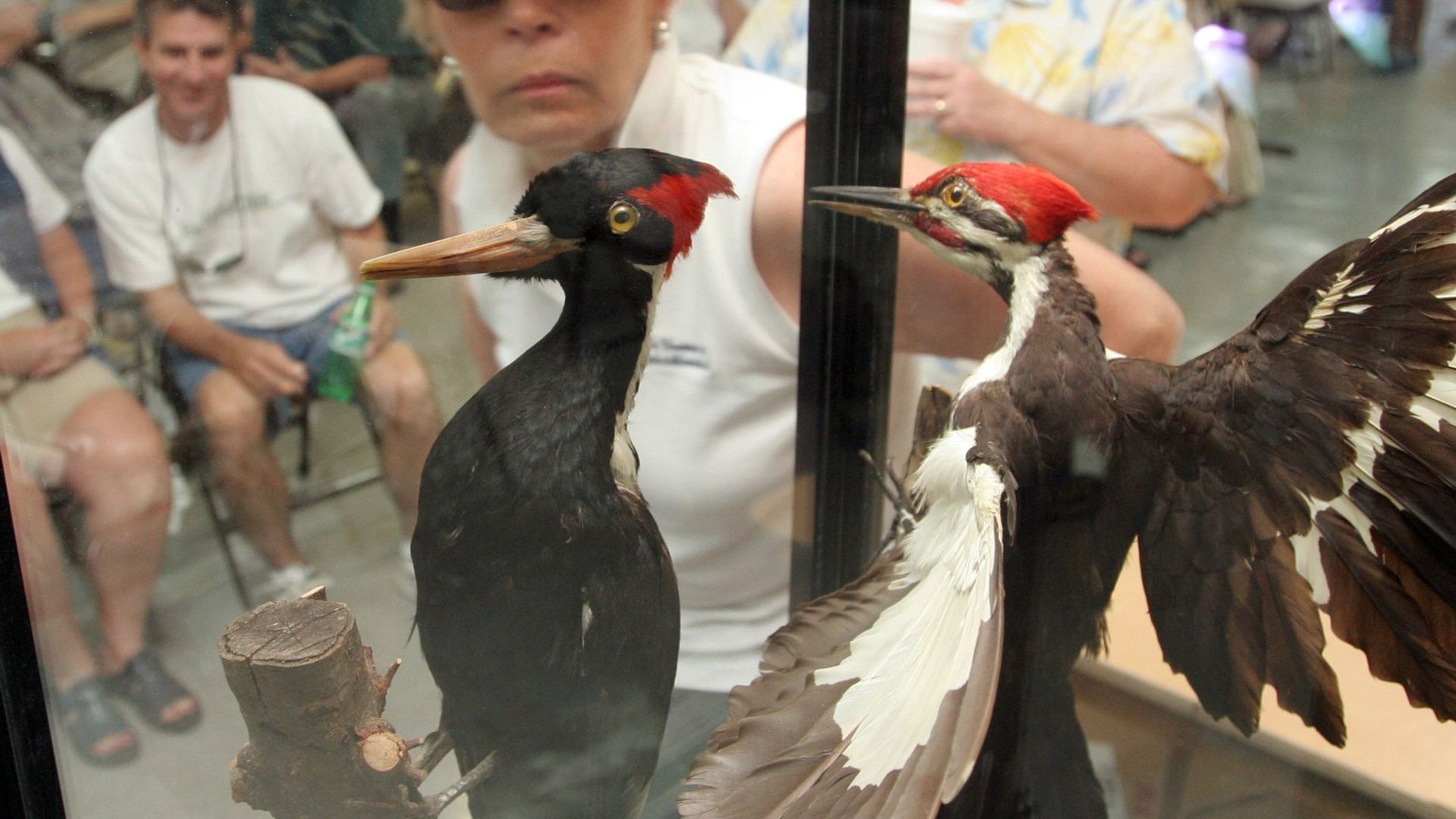
[JACK AYLMER]
A SPECIES OF WOODPECKER COULD HELP PUSH GENETIC SCIENCE INTO NEW TERRITORY.
WHETHER OR NOT THE IVORY-BILLED WOODPECKER IS EXTINCT IS STILL UP FOR DEBATE.
EITHER WAY, A TEAM OF BIOLOGISTS ARE HOPING TO HELP IT MAKE A COMEBACK.
A BIOSCIENCE COMPANY ANNOUNCED THIS WEEK IT’S LAUNCHING A PROCESS THEY’RE CALLING “DE-EXTINCTION”.
WITH PLANS TO REINTRODUCE THE SPECIES NEXT YEAR.
THE TECH IS BASED ON CLONING BUT THIS PROCESS IS SOLELY FOR BIRDS.
RESEARCHERS SAY THEY’LL USE THE D-N-A OF THE WOODPECKER AND ITS CLOSEST LIVING RELATIVES. THEN, WITH THE HELP OF COMPUTER MODELING, SCIENTISTS WILL “EDIT” THE GENETIC MAKEUP OF THE LOST SPECIES.
IT’S THE LARGEST KNOWN SPECIES OF WOODPECKER TO EVER EXIST IN THE U-S.
SPORTING A WINGSPAN OF MORE THAN TWO FEET AND A LENGTH OF NEARLY A FOOT.
THE GIANT WOODPECKER ONCE ROAMED LARGE SWATHS OF THE U-S FROM TEXAS AND FLORIDA TO AS FAR NORTH AS ILLINOIS.
ITS POPULATION BEGAN TO DWINDLE IN THE 1800S AS SETTLEMENTS CLEARED OUT FORESTS AND BY THE 19TH CENTURY SIGHTINGS WERE SO RARE THE BIRDS WERE DISPLAYED IN MUSEUMS OR PEOPLE’S PRIVATE COLLECTIONS.
IT WAS REDISCOVERED IN THE 1920S WITH THE LAST UNCONTESTED SIGHTING HAPPENING IN 1944.
THE U-S COMPANY BEHIND THE GROUNDBREAKING EXPERIMENT, COLOSSAL BIOSCIENCES, IS ALSO ATTEMPTING TO BRING BACK THE WOOLY MAMMOTH AND DODO BIRD.
CRITICS OF DE-EXTINCTION EFFORTS WARN OF THE POTENTIAL ENVIRONMENTAL IMPACTS AND SAY THE RISKS OUTWEIGH THE BENEFITS.
BUT COLOSSAL BIOSCIENCES SAY THEY ALSO LOOK AT THE ROLE THAT ANIMAL COULD PLAY IN THE ECOSYSTEM BEFORE REINTRODUCING THE SPECIES.
FOR MORE ON THIS STORY– DOWNLOAD THE STRAIGHT ARROW NEWS APP OR VISIT SAN DOT COM.
FOR STRAIGHT ARROW NEWS– I’M JACK AYLMER.











